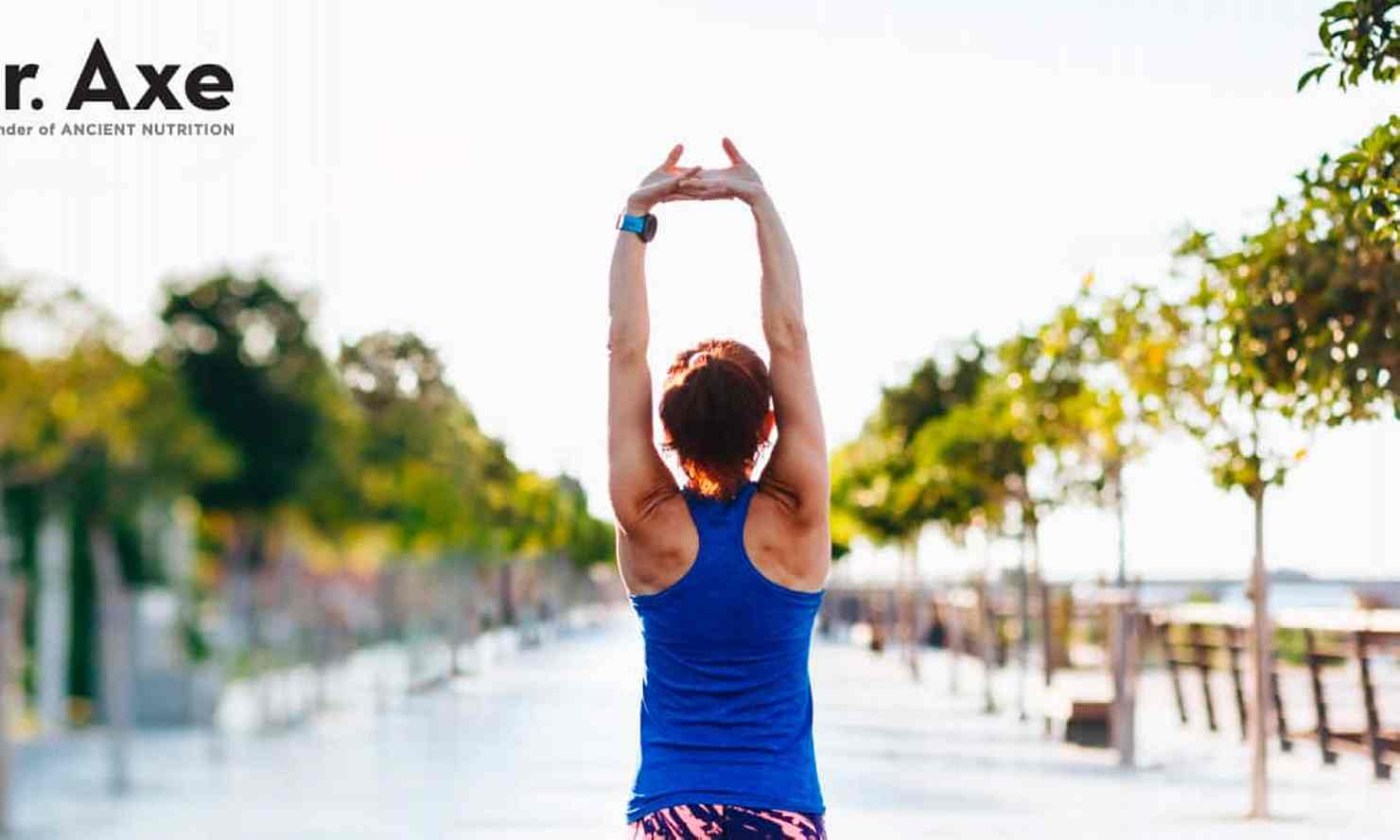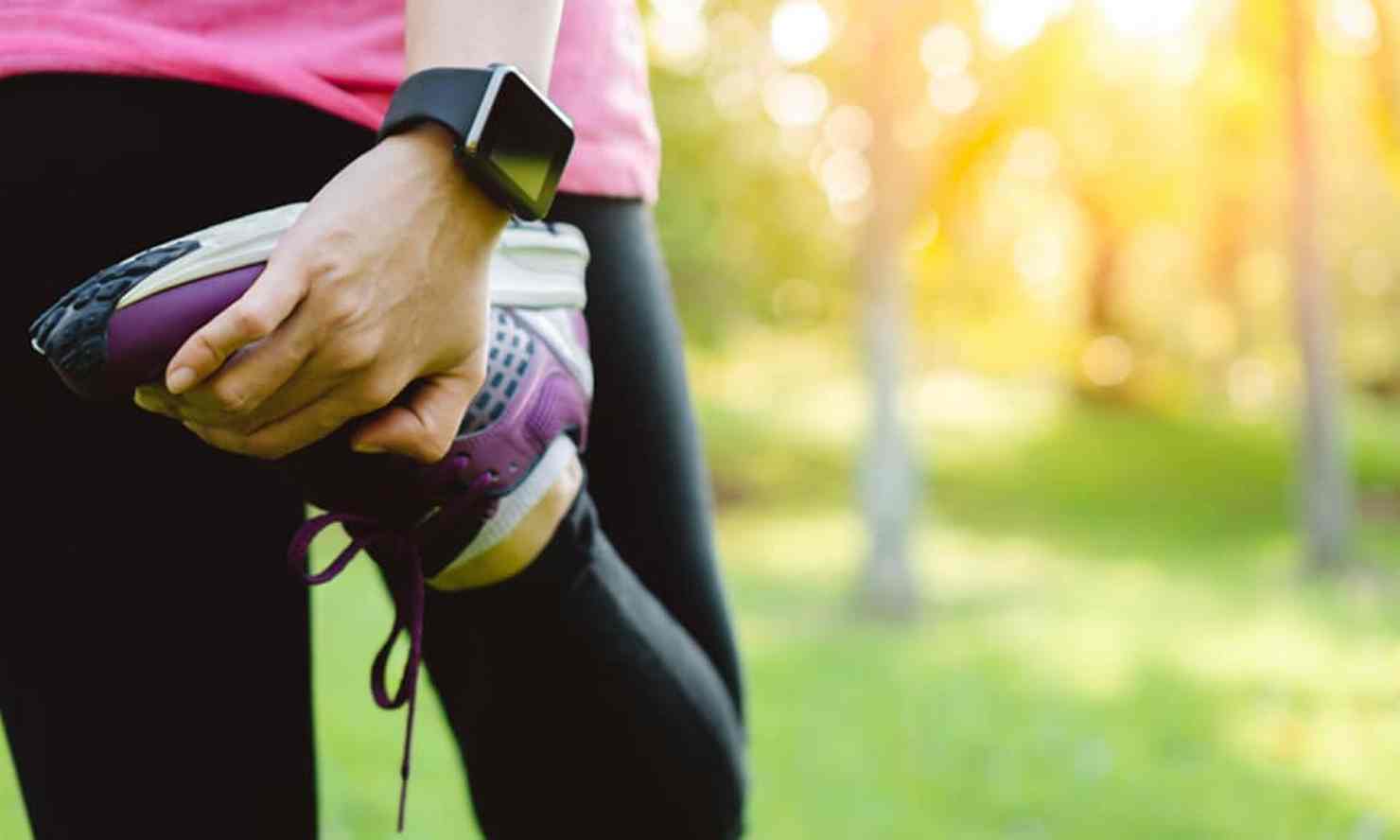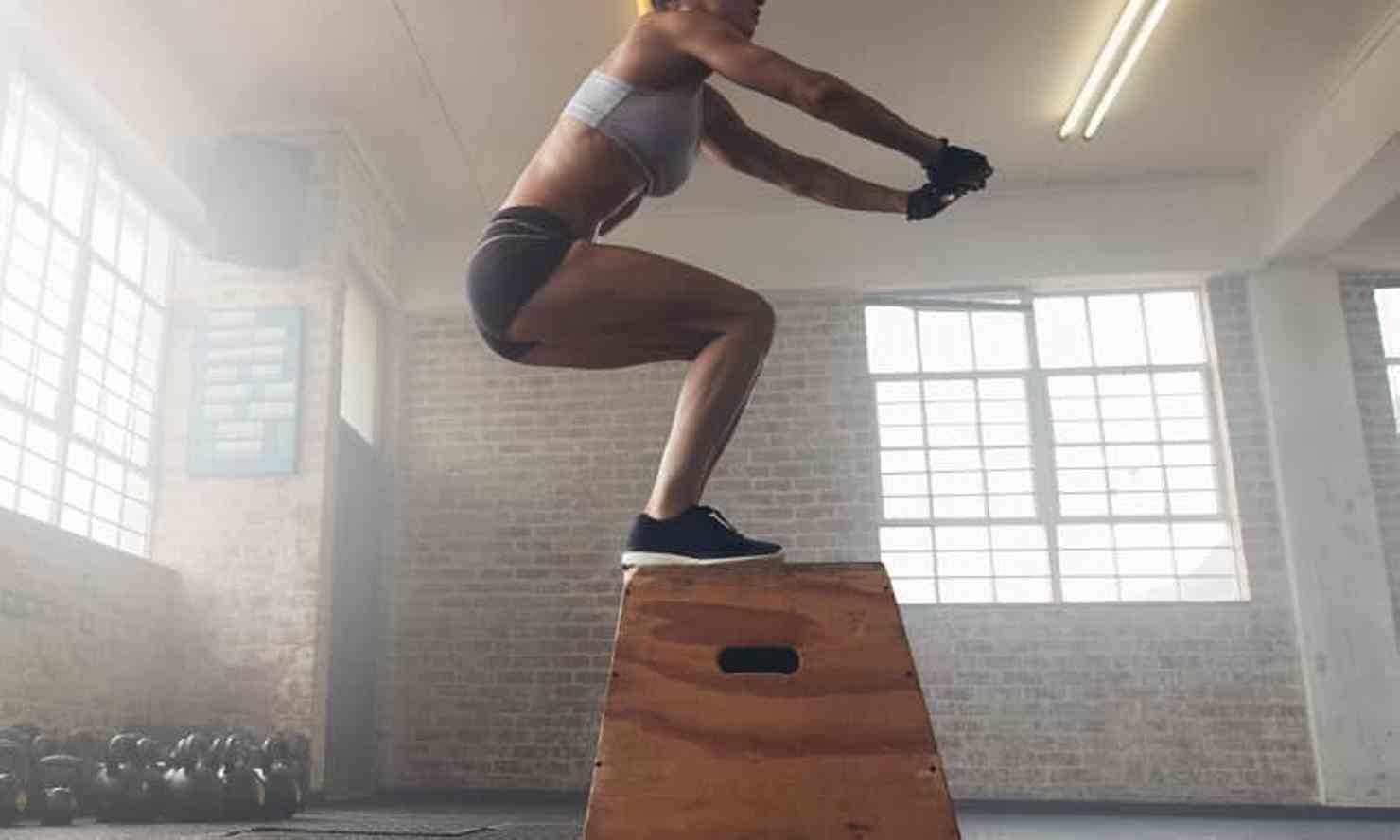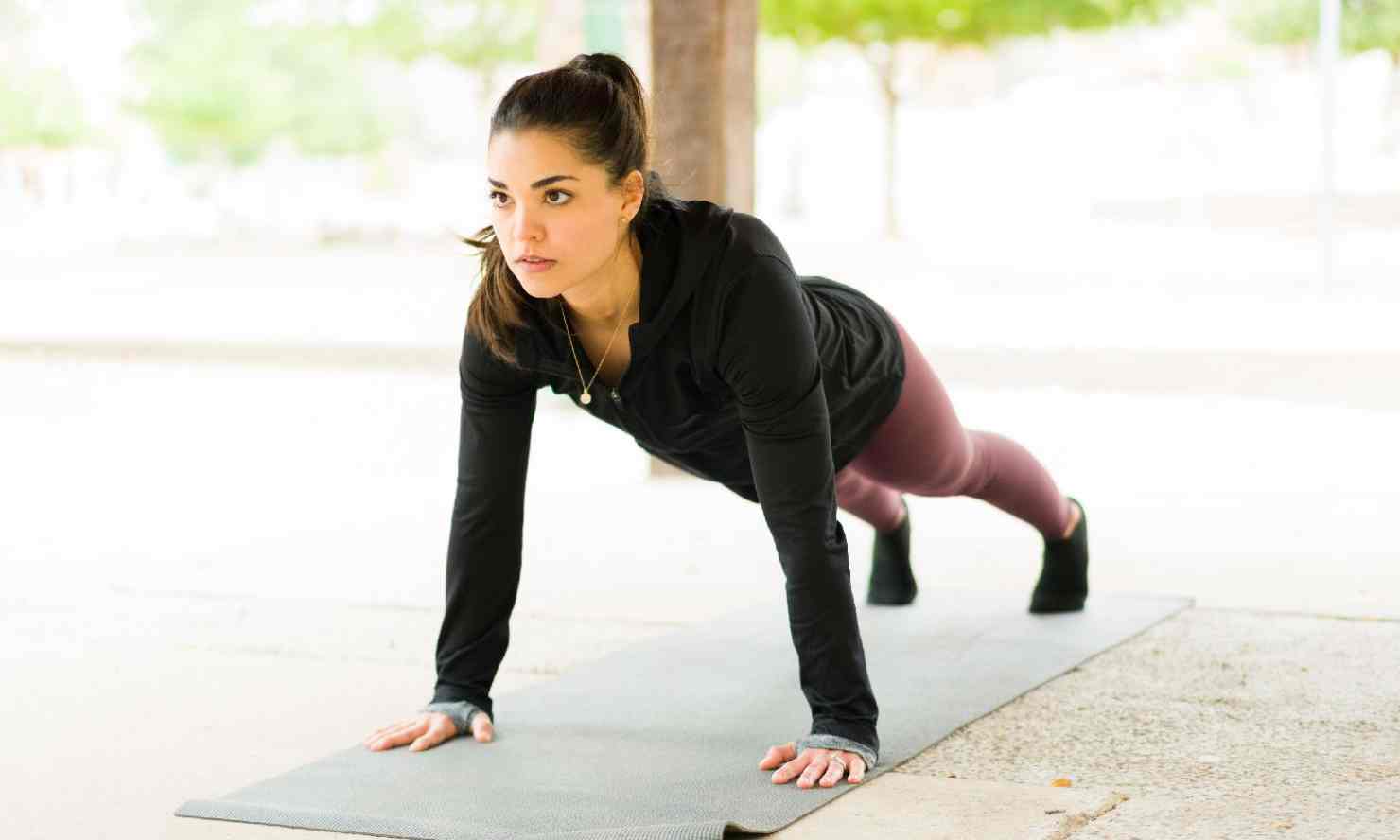
When most of us think of stretching, we picture simple static stretches — like bending forward to touch our toes or lifting a bent arm back behind us to stretch our shoulders. There’s a whole other category of stretches, called dynamic stretching, that is a more active form of stretching.
What are examples of dynamic stretches? Some popular ones include leg and arm circles, air squats, and marching in place.
These types of movements help prepare our muscles for exercise. That is why they are recommended as part of an effective warm up-routine.
Studies have found that dynamic stretching before a workout or sport can help avoid muscle injuries, increase joint flexibility and optimize performance.
What Is Dynamic Stretching?
Dynamic stretching refers to any type of stretch that is performed with movement as opposed to holding still in a static position. The goal is to warm up muscles and other tissues, increase blood flow, and improve range of motion and flexibility.Ad
The types of movements involved in dynamic stretching can include:
- swinging
- circling
- lowering and lifting back up
- marching
- stepping
- bouncing
Stretching in general, whether while moving or holding still, offers several main benefits, including improved flexibility and prevention of injuries. These are associated with health perks such as the ability to age more gracefully and remain independent in older age.
Experts categorize dynamic stretches into four main groups:
- Traditional Dynamic Stretching (often the most recommended type): Uses controlled, soft bounce or swinging motions. Intensity of movements are gradually increased but remain slow, gentle and purposeful.
- Active Isolated Stretching (also called Mattes Method): Works by contracting the antagonist or opposing muscle group. Stretches are only held for about two seconds or less.
- Resistance Stretching and Loaded Stretching: Works by contracting and lengthening a muscle at the same time. A muscle is stretched through its entire range of motion while under contraction.
- Ballistic Stretching: Uses momentum generated by rapid swinging and bouncing. Some feel this is a risky way to stretch since the chance for injury is somewhat high.
Dynamic vs. Static Stretching
While both types are beneficial in their own ways, static and dynamic stretches differ from one another based on how they are performed, plus when they are most useful.
The main difference between the two is that dynamic stretching involves movement, while static stretching is performed while holding a fixed position (without movement). When someone is performing a stretch position, such as a seated butterfly stretch or held back bend, that person remains in one position for about 10 to 30 seconds on average.
Static stretching has its own advantages and is often recommended post-workout to help support recovery. For example, static stretches like hamstring, quad and hip flexor stretches are useful for reducing imbalances and muscular compensations that can contribute to strains, pulls and tears, especially when coupled with other tools, such as foam rolling.
That said, static stretching before a workout can actually have some detrimental effects, like potentially reducing strength, power and performance.
Overall experts believe that for warming up or preparation, dynamic stretching is the most effective, while for cooling down, static is the best approach.
Related: What Are the Benefits of Working Out in the Cold? (Plus Safety Tips)
Benefits
1. Increases Flexibility and Range of Motion
Dynamic stretching increases your range of motion and flexibility by making soft tissues longer and less stiff. “Tissues” refer to parts of your body including your ligaments, joints and muscles, all of which allow you to move.
Performing dynamic stretches leads to warmed-up muscles, better blood flow and improved “dynamic flexibility.” An article in published in the Journal of Physical Education and Recreation describes it as “the ability to use a range of joint movement in the performance of a physical activity at either normal or rapid speed.”
2. Can Help Improve Exercise or Athletic Performance
Stretching helps prepare the body for activity or sports. That is why dynamic stretching is considered an important component of a warm-up routine.
It’s especially beneficial for athletes who participate in sports that require rapid or explosive movements, such as sprinting, jumping and throwing.
It can help improve performance in things like vertical jumps and short sprints that require balance and speed — plus it can enhance power and increase coordination.
3. Useful for Preventing Injuries
Because an effective warm-up can reduce stiffness and tightness of muscles and joints, it can help prevent injuries like pulls and strains, as well as aches and pains following exercise. Ideally, it’s best to combine both dynamic and static stretches (before and after your workout, respectively) for the greatest injury prevention.Ad
Examples of Dynamic Stretches
A proper warm-up ideally includes about five to 10 minutes of low to moderate dynamic stretching. Aim for 10 to 12 repetitions of each movement below.
This is appropriate before exercising or before participating in sports like swimming, jogging or cycling.
For sports that require throwing and hitting (such as football, baseball, tennis, hockey and lacrosse), be sure to warm up all parts of the body while stretching, especially the lower and upper body as well as the core, which are all heavily involved.
To warm up before a general workout:
What are the best dynamic stretching exercises to do before a workout? Try these, which target different parts of the body, such as the shoulders, neck, legs, back and core:
- Neck twists
- Ankle twists
- Torso twists
- Leg and arm swings
- Walking lunges
- Air squats
For runners (or those playing sports like track-and-field, soccer, rugby or football):
One of the most common running tips, especially for beginners, is to make sure to stretch before and after running. It’s especially important to warm up muscles in the legs and hips, including the hamstrings, quads and hip flexors.
Here are some pre-workout running stretches to incorporate:
- Leg swings
- Walking lunges and side-step lunges
- Hamstring stretches, such as “moving standing forward stretches” (keep your front foot flexed and back heel on the ground with toes facing up, then gently lean forward and back) or laying down hamstring stretch (lifting one leg and gently pulling it back and forth toward you)
- High knees (brining your knees up and in toward your abdomen/chest) or leg kicks (reach your arm to the side, then kick your leg up and out toward your palm)
- Hip flexor stretches, such as a deep hip stretch with a twist (similar to a lunge but your hips are lower and back knee may touch the ground)
- Laying down hip/leg abduction lifts (while on your side) or clam shells
To target your upper body:
- Neck rolls
- Lower back stretches, such as “child’s pose” or “cat-cow “(a yoga pose done on all fours while you lift and lower your chest and tailbone)
- Wide arm circles
- Behind-head tricep stretches
- Shoulder rolls
- Assisted push-ups
To target your lower body:
What are dynamic stretches for your lower body?
- Hip flexor stretches, such as laying down knee-to-chest movements
- Walking lunges with torso twists
- Small hip circles
- Squats or jump squats (more advanced)
- High knees or leg kicks
- Moving glute bridges
Risks and Side Effects
One of the main dangers and disadvantages of dynamic stretching is that it can be easy to push yourself too far and potentially strain something. Ballistic stretching, for example, can force the body part beyond a healthy and helpful point.
It’s important to approach this type of warm-up in a gentle, controlled way.
Always be sure to start off slowly, and listen to your body rather than aggressively moving or pushing your muscles and joints too far. You can repeat all of your stretches in second or third sets if you have the time, which will give you the chance to boost the intensity.
Overall, less is usually more.
To prevent injuries, don’t push your joints past their normal range of movement or do anything that causes pain.
Conclusion
- Dynamic stretching is the type that involves movement rather than holding a fixed position. It’s often done as part of a warm-up and helps warm, lengthen and loosen soft tissues like muscles and joints.
- It can help improve flexibility, range of motion, power, sprints, jumps, performance and recovery.
- What are five dynamic exercises? Examples include leg and arm circles, walking lunges, high knees, torso twists, and air squats.
- Experts believe that for warming up or preparation, dynamic stretching is the safest and effective option, while for cooling down, static stretching is the best approach.





